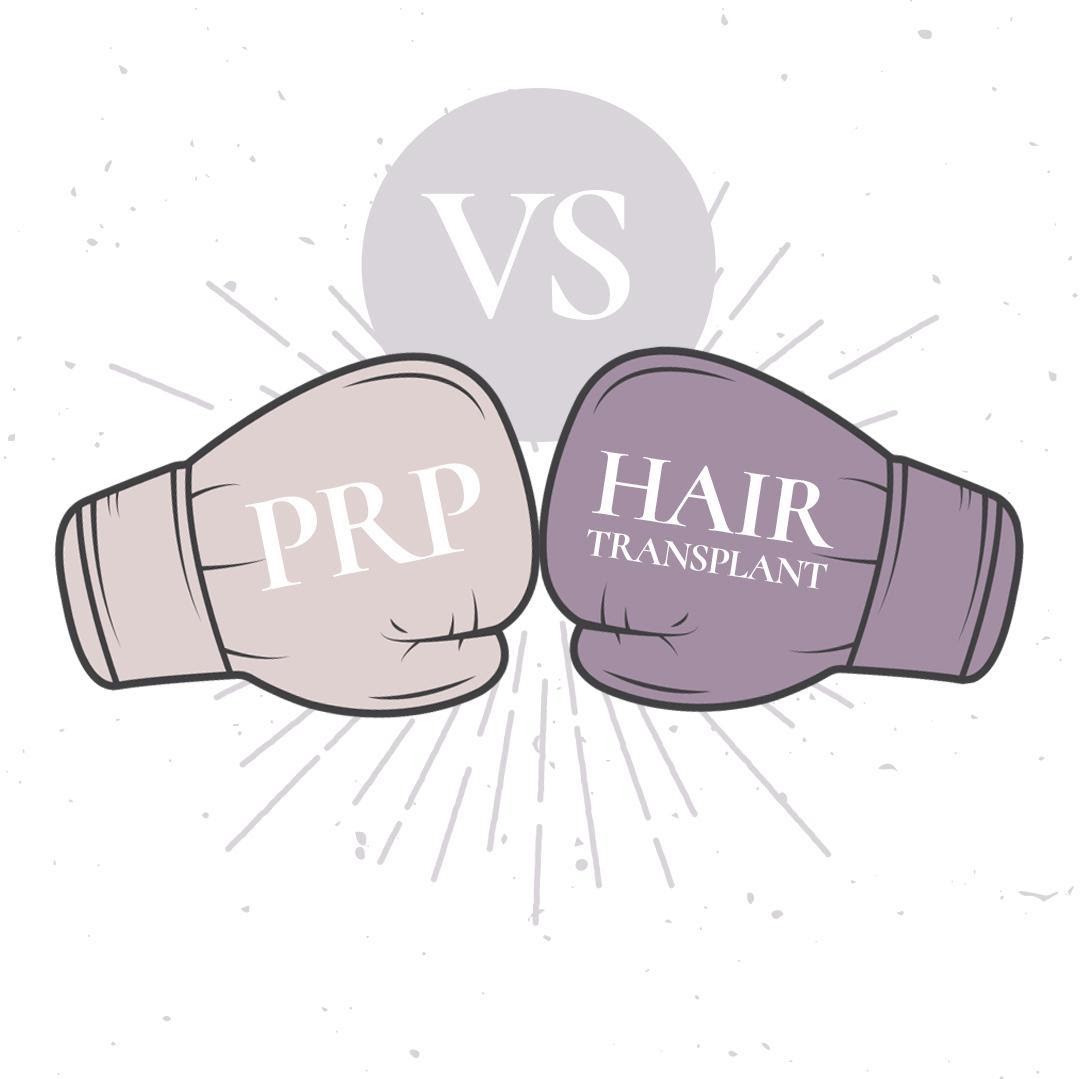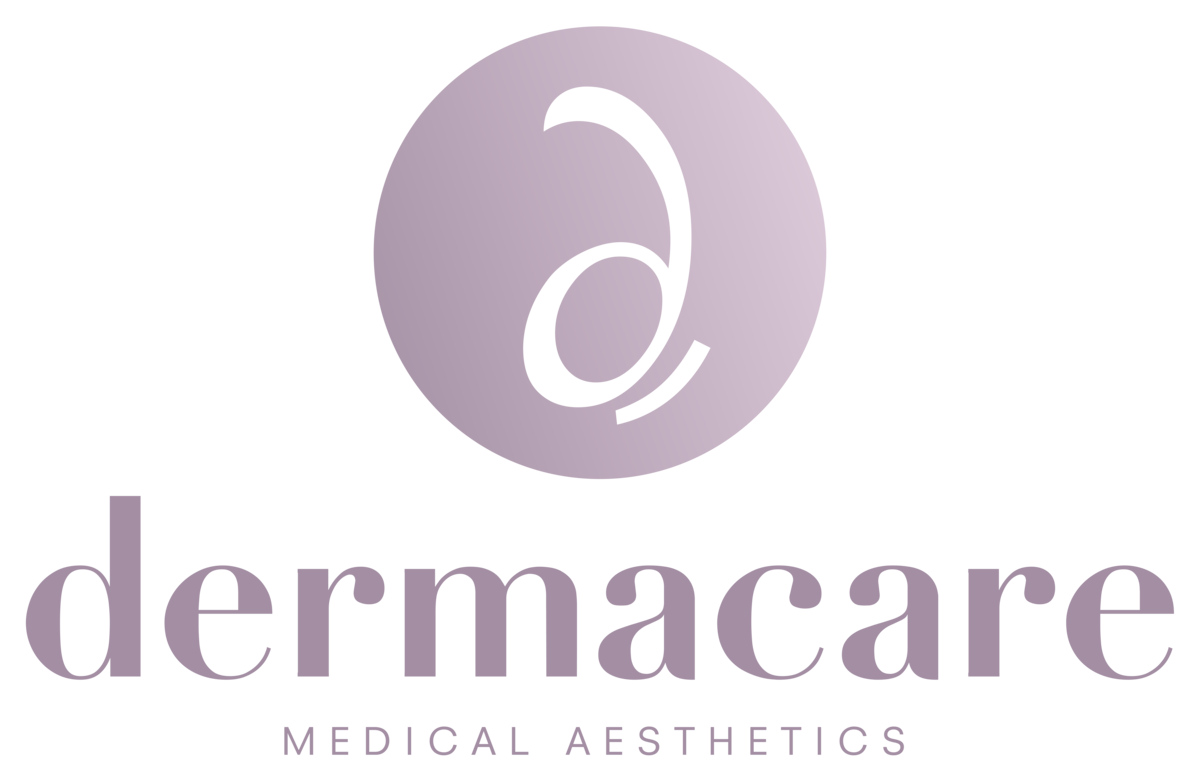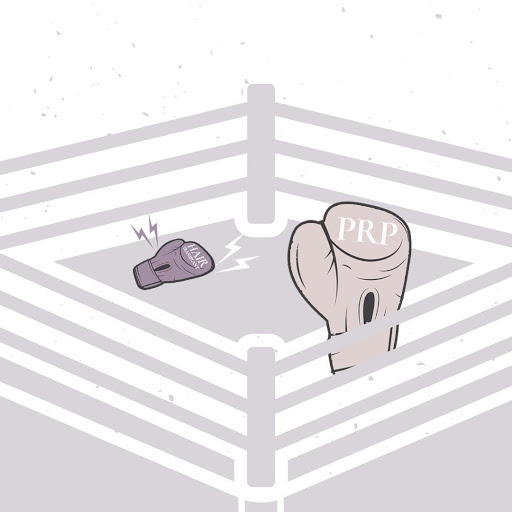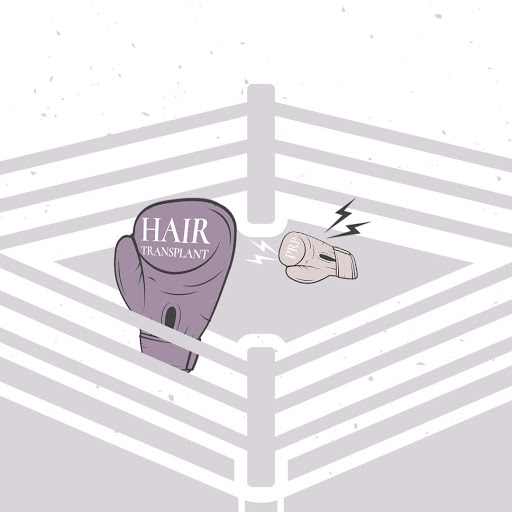
People who are searching for ways to restore a receding or thinning hairline are often met with two choices: platelet-rich plasma treatment or a hair transplant. It’s not always clear which is the better option, so let’s have them go a few rounds to see which approach comes out on top…
Round 1: Procedure
When it comes to how invasive these procedures are, PRP easily takes this round since it only requires injections into the treated area. After having blood drawn and clarified in a centrifuge, your physician is left with platelet-rich plasma derived from your own body. Delivering them through injections and microneedling can help bolster the thickness of the hair in that area.
On the other hand, a hair transplant usually requires that an entire strip of hair, sometimes as long as 10 inches, be removed from the back of your head. A numbing agent is usually required, but you may also need some form of sedation. All in all, hair transplants are much more invasive than PRP treatment.
Winner: PRP, landslide
Round 2: Side Effects
Things seem to even up a bit in this round. Regardless of what procedure you are having performed, there are some universal risks that you will encounter. The possibility of infection and excessive bleeding are two of the most prominent. Potential nerve damage or injury to blood vessels also comes with both procedures.
After PRP treatment, it is normal to experience some minor pain or discomfort after the procedure. These effects usually only last a day or so. The same pain and discomfort are common with hair transplant procedures as well, although it does tend to last a little longer since the incisions are more extensive than the injections for PRP.
So while both treatments come with minor risks, PRP treatment will take this round by a slight edge because avoiding extensive incisions means less chance of developing side effects.
Winner: PRP, slight edge
Round 3: Scarring
In addition to injections, PRP treatment often includes microneedling. Both of these methods have a rare chance to cause scarring at the application sites. But while the chances are slim, it is still a possibility that needs to be considered, especially if you know you are prone to poor wound healing or excessive scarring.
Hair transplants, however, guarantee that you will have some scarring at the location where your hair was borrowed. Typically, the hair is pulled from an area that can be easily hidden within the hairline, but that doesn’t mean that future hair loss won’t reveal the scar at some point in your future. And if you are already developing hair loss, then it is more likely that the scarred area will eventually become exposed.
Since hair transplants guarantee scarring, PRP gets another round win since it has only a small chance of developing any scarring or calcification.
Winner: PRP, landslide
Round 4: Recovery
We touched briefly on this already, but there is a natural correlation between the procedure’s invasiveness and how long it takes to recover. PRP is little more than a few shots and possibly some microneedling, so in the worst-case scenario, healing could take up to five or seven days. Since a hair transplant requires a strip of skin to be removed, the recovery period is extended for the time it takes for the wound to heal, which can be anywhere between two and three weeks.
The severity of the recovery is also much easier for PRP treatment, which brings about only minor pain or discomfort from skin irritation. But skin removal may require over-the-counter or prescription medication to cope with the effects of surgery. You will also need to be much more attentive about your hair transplant wounds since their risk of opening or becoming damaged is more concerning than skin irritation from PRP treatment. It’s a clear round for PRP.
Winner: PRP, landslide
Round 5: Cost
PRP hair treatment and hair transplant are both cosmetic procedures that are likely not covered by insurance. So one of the most pressing questions people have when considering which is right for them is how much they fit into the budget. This particular bout is a little complicated to understand, so let’s break it down for each procedure.
The average cost of a single PRP treatment is around $1,000. This can change depending on your unique conditions, but it gives you a general idea of what to expect. PRP therapy begins with three initial treatments within six weeks. Then, it is generally expected that you will need maintenance treatment every six months. That means in the first year, you can expect to pay about $4,000 for PRP hair treatment and about $2,000 to maintain those results every year after.
A hair transplant is a little trickier to nail down. Some people who are experiencing minor hair loss may only need to spend about $5,000 or $6,000 for the surgery, but people with more severe cases could be expecting to pay up to $15,000. The upside is that there is no maintenance required after the surgery is completed, but that doesn’t mean that you won’t experience additional hair loss and you continue to age. If this occurs, you will need to consider further surgery to once again get back to the hair thickness you prefer.
Not every patient needs a second hair transplant surgery, but every PRP treatment patient will need maintenance treatments. It’s hard to tell which option will better serve you without scheduling a consultation with a board-certified physician like Dr. Birchall. Still, permanent solutions are generally more convenient, so we will award this round to hair transplants.
Winner: Hair transplants, slight edge
Round 6: Results
Unfortunately, neither procedure can guarantee perfect results. PRP hair treatment success depends on the patient’s blood quality, and hair transplant surgery can often fall short of the patient’s goals. But both can offer reliable improvement in most cases to patients who are considered to be strong candidates. For that reason, let’s go ahead and call this round a draw.
Winner: Draw
Final Tally
| Platelet-Rich Plasma | Hair Transplant | Draw |
|---|---|---|
| 4 Rounds | 1 Round | 1 Round |
Reliable Hair Restoration in San Diego
If you are interested in scheduling a consultation with a board-certified cosmetic surgeon to learn more about hair restoration options that are available to you, then give one of Dermacare’s offices a call:
San Diego Office: (858) 487-3376
Carlsbad Office: (760) 448-8100
You can also fill out our online contact form, and one of our medical professionals will get back to you as soon as possible.


